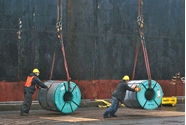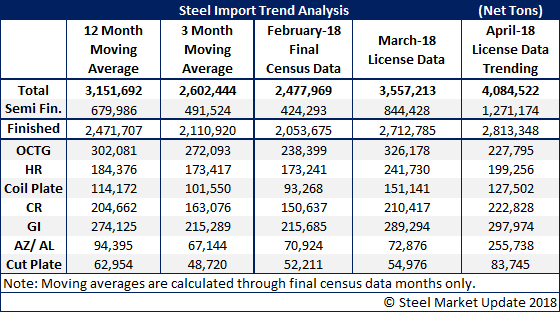Prices

April 10, 2018
March Steel Imports +1 Million Tons More than February, April Starting with a Bang
Written by John Packard
The U.S. Department of Commerce reported foreign steel import license data late this afternoon for the months of March and April 2018. They also reported final census data for February, which came in at 2,477,969 net tons. The March trend is imports were up 1 million tons above February at 3.5 million net tons.
Through the first 10 days of April, imports continue to flow in at very high levels due to the wild increase in domestic prices, which justifies buyers bringing in foreign steel bought months ago at much lower levels. The buyers can afford to pay the 25 percent tariff and still have prices below current domestic price levels.
Here are the details based on the data retrieved from the DOC late this afternoon:








